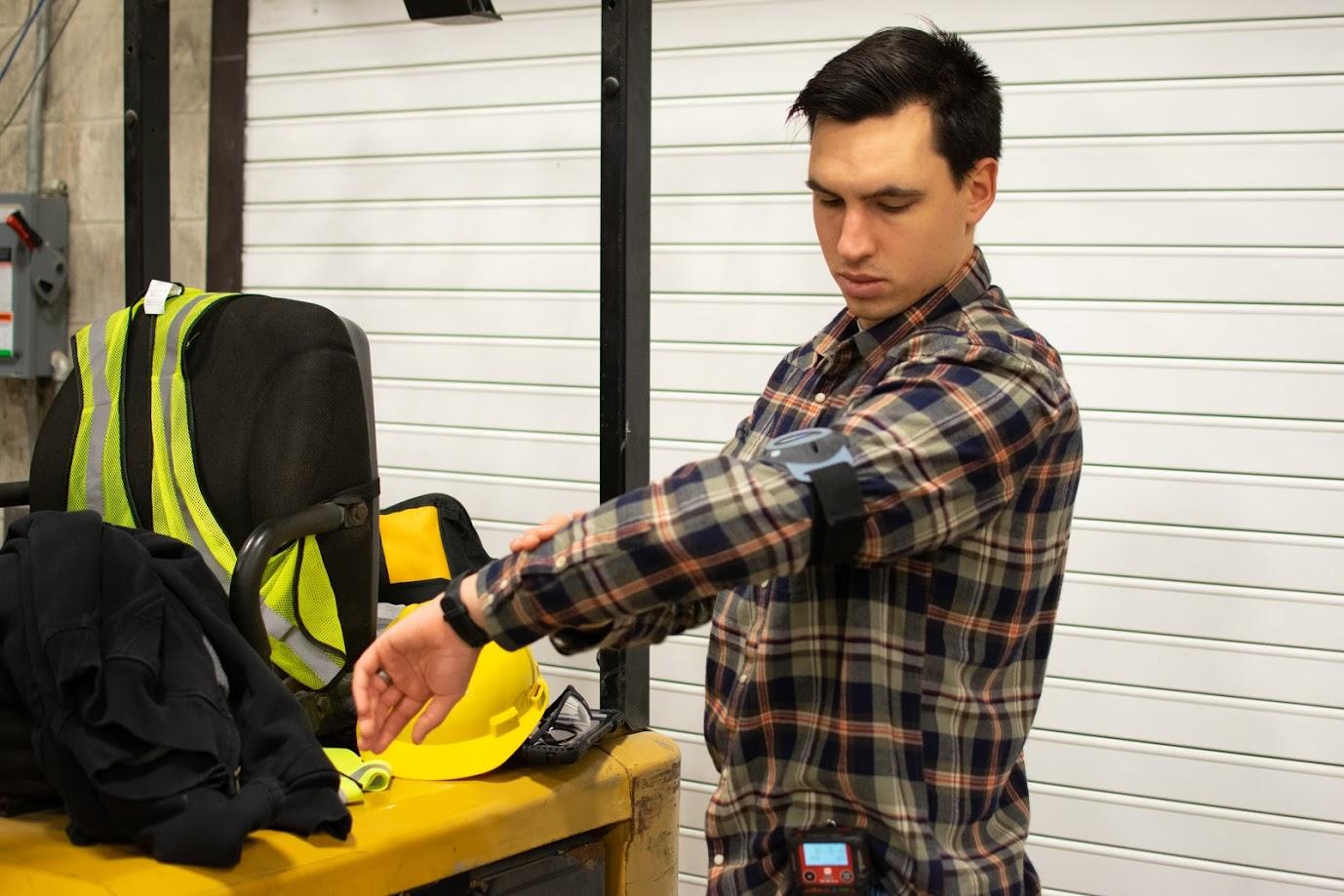Smarter Tracking of MRO Technician Safety Through AI, Wearables

A new “Safety as a Service” system from startup Sentinel Occupational Safety is looking to improve MRO technician safety while increasing productivity. Originally developed in partnership with Lockheed Martin as a confined space monitoring system for U.S. Air Force maintenance personnel, SafeGuard combines sensors, artificial intelligence (AI) and analytics to monitor workers in potentially hazardous scenarios.
SafeGuard’s “sensor suite” focuses on four key areas: health sensing (e.g. heart rate, respiration, body temperature, motion levels, oxygen saturation etc.), environmental sensing (e.g. carbon monoxide, organic compounds, etc.), behavior monitoring (e.g. fall detection, occupational noise exposure, whether a person is moving or has recently asked for help, etc.) and location sensing—either through GPS or GPS denied asset tracking. By pooling together a variety of data and using AI analysis, SafeGuard can contextualize whether a situation is dangerous and when action needs to be taken.
For instance, the system’s original focus at the U.S. Air Force was on monitoring maintenance technicians working inside confined aircraft spaces, where oxygen depletion can be a concern. For confined space work like this, “the current OSHA standard actually requires a 1:1 standby safety attendant,” explains Zachary Kiehl, CEO, Sentinel Occupational Safety. “So every person that’s going into a space has to have a person stand there and watch them work. [It’s] very inefficient, obviously, from a labor standpoint, but then also very ineffective in that there’s a lot of things going on potentially in those spaces the human eye can’t see, especially if that standby safety attendant doesn’t even have a direct line of sight.”

According to Kiehl, the SafeGuard system can both detect anomalous conditions such as low oxygen levels or dangerous gas, and enable workers to call for help—both for emergency situations in which medical assistance is needed or for something as simple as needing a specific tool. He notes that the U.S. Air Force is also using SafeGuard to monitor heat stress for workers in Warner Robins, Georgia. “In the middle of the summer it can be very hot and they’re having these people, maybe with Gore-Tex suits or respirators on, working pretty hard,” says Kiehl. “Things like dehydration, heat stress and heat exhaustion are real concerns. Rather than periodically reminding people to drink water or take a rest, our system also has the ability to detect their motion level, the activity they’re doing, posture, their body temperature, their skin temperature, those types of things—which would be indicative of heat stress.”
The system’s location sensing could also be used to keep tabs on where workers are at a facility, which could provide benefits in situations such as fires or for COVID-19 contact tracing. According to Kiehl, SafeGuard can track some novel coronavirus symptom data and if an organization is willing to use location beacons, it could be efficient in tracing an infected worker’s steps to see which other people were in their vicinity throughout the day.
Kiehl says that through its testing with the U.S. Air Force, SafeGuard has proven to have a beneficial return on investment. At the Warner Robins Air Logistics Complex, which performs approximately 41,000 hr. of confined space labor per year, Kiehl says SafeGuard has provided an 80% productivity increase by enabling workers normally assigned to one-on-one safety monitoring to be reallocated toward value added activities.
Instead, he says, they are able to assign a roving attendant to oversee multiple workers simultaneously, who works with a remote safety attendant to provide continuous oversight. By enabling more workers to focus on value added activities “instead of having someone stand there and arguably not do anything besides check the box on an OSHA regulation,” Kiehl says the system has provided the U.S. Air Force with around $2 million per year in labor savings. He adds that OSHA has assessed this use case as compliant in replacing 1:1 safety monitoring.
Now that research and development efforts with the Department of Defense have wrapped up, Kiehl says Sentinel Occupational Safety is in talks with several Air Force clients that are planning to acquire the SafeGuard system. The company is now looking to bring the technology to the commercial sector and Kiehl says it is seeking early commercial adopters for pilot trials of the technology.
“We’re excited to take innovative technology designed to protect military personnel and transition it to the urgent safety needs of workers in the wider industrial market,” he says. “SafeGuard not only better protects workers in dangerous jobs, but it’s also a workforce multiplier enabling better allocation of human labor.”
While pricing will vary based on complexity of use cases, Kiehl says Sentinel will be offering SafeGuard through its trademarked Safety as a Service model, with pricing including the required equipment and a monthly fee.


